Shinagawa – History Tours Vol.2
Tokaido Shinagawa-shuku Course
During the Edo Period (1603-1868), Shinagawa-shuku prospered as a station town on the Tokaido, the ancient highway between Kyoto and Edo. The Tokaido Shinagawa-shuku course introduced in this issue will help you explore the area while getting a sense of its history and culture.
Inquiries: Cultural Assets Subsection, General Affairs Section
(Tel: 03-5742-6839, Fax: 03-5742-6890)
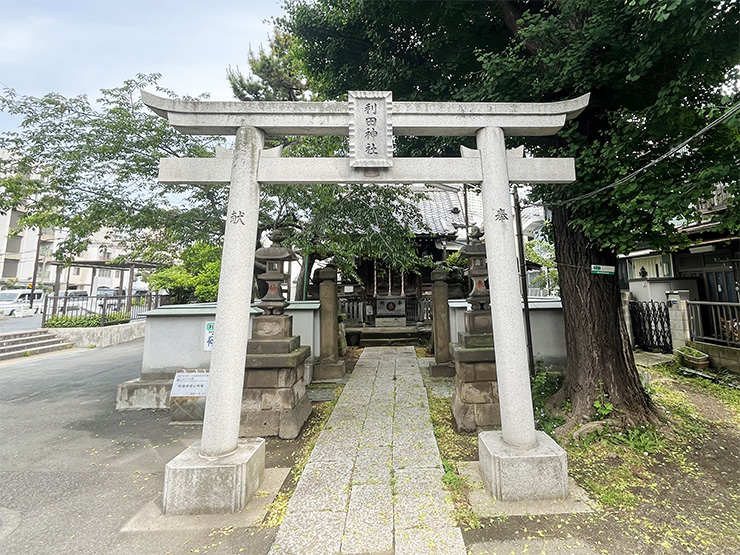 |
MAP 1
Kagata-jinja Shrine
Kagata-jinja Shrine, also known as Susaki Benten and is considered the god of intelligence and art, was depicted in an ukiyo-e painting by Utagawa Hiroshige. The stone monument on the shrine’s grounds labeled “Kujirazuka” marks the spot where the bones of a whale that strayed into the waters off Shinagawa in 1798 were buried.
Location: 1-7-17 Higashi-Shinagawa |
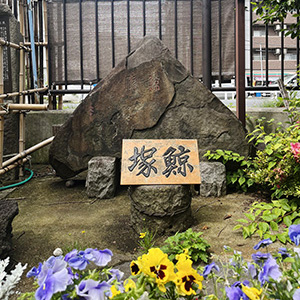
Kujirazuka (“Whale Mound”) |
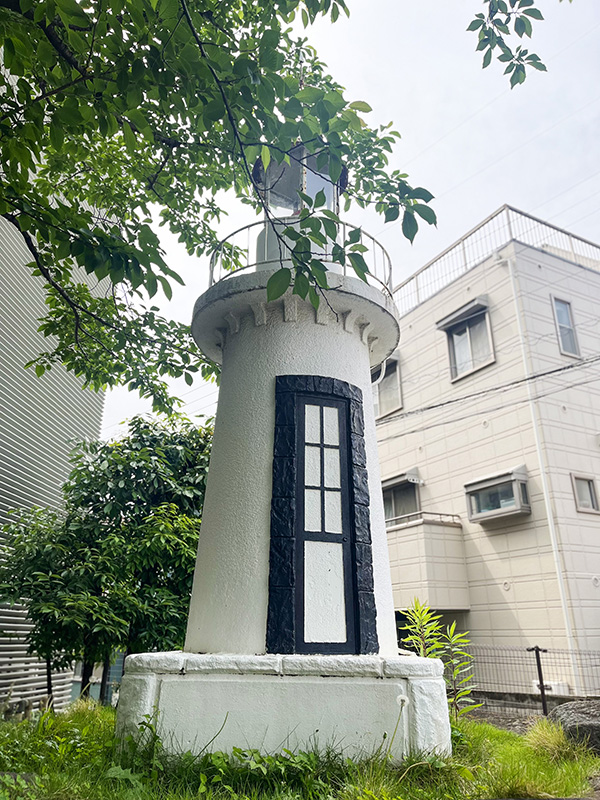
Model of the Shinagawa Lighthouse
|
MAP 2
Gotenyama-shita Battery Site
This is the site of one of the Shinagawa batteries built to defend Edo. A number of five-sided battery islands were built along the shores of Shinagawa. Today, an elementary school stands on part of the site of the Gotenyama-shita battery.
Location:1-8-30 Higashi-Shinagawa (in front of Daiba Elementary School)
|
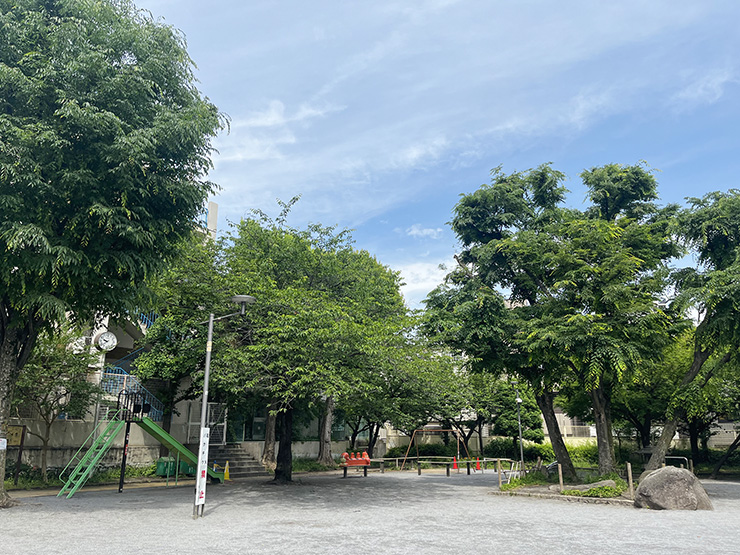 |
MAP 3
Seiseki Park[Shinagawa-shuku honjin site]
Seiseki Park was built on the site of Shinagawa-shuku’s honjin—the place where feudal lords and their retainers would stay during their journeys along the Tokaido. Emperor Meiji stopped there in 1868, making it a seiseki, or sacred site, which gave the park its name. Today, Seiseki Park is a popular place for recreation and relaxation.
Location:2-7 Kita-Shinagawa |
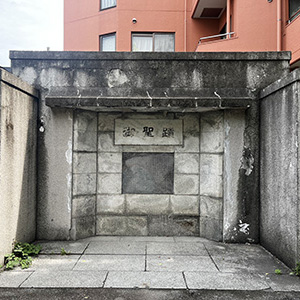
Seiseki monument |

Stone lantern |
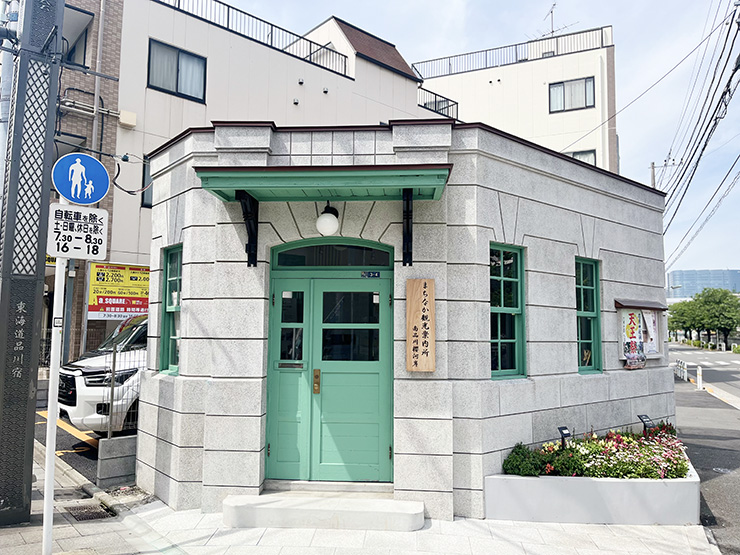 |
MAP 4
Former Shinagawa Police Station Shinagawabashi Traffic Waiting Area
[Minami-Shinagawa Sakuragashi Machinaka Tourist Information Center]
This information center was once a police box built around 1929. The area was apparently a major thoroughfare on the former Tokaido. As a tourist information center, it provides information on the history, culture and sightseeing spots in the Shinagawa-shuku area.
Location:1-3-4 Minami-Shinagawa
Hours:10:00 a.m. to 5:00 p.m. on Mondays, Thursdays and Saturdays
|
| Reference: Shinagawa History Tours (in Japanese only) |
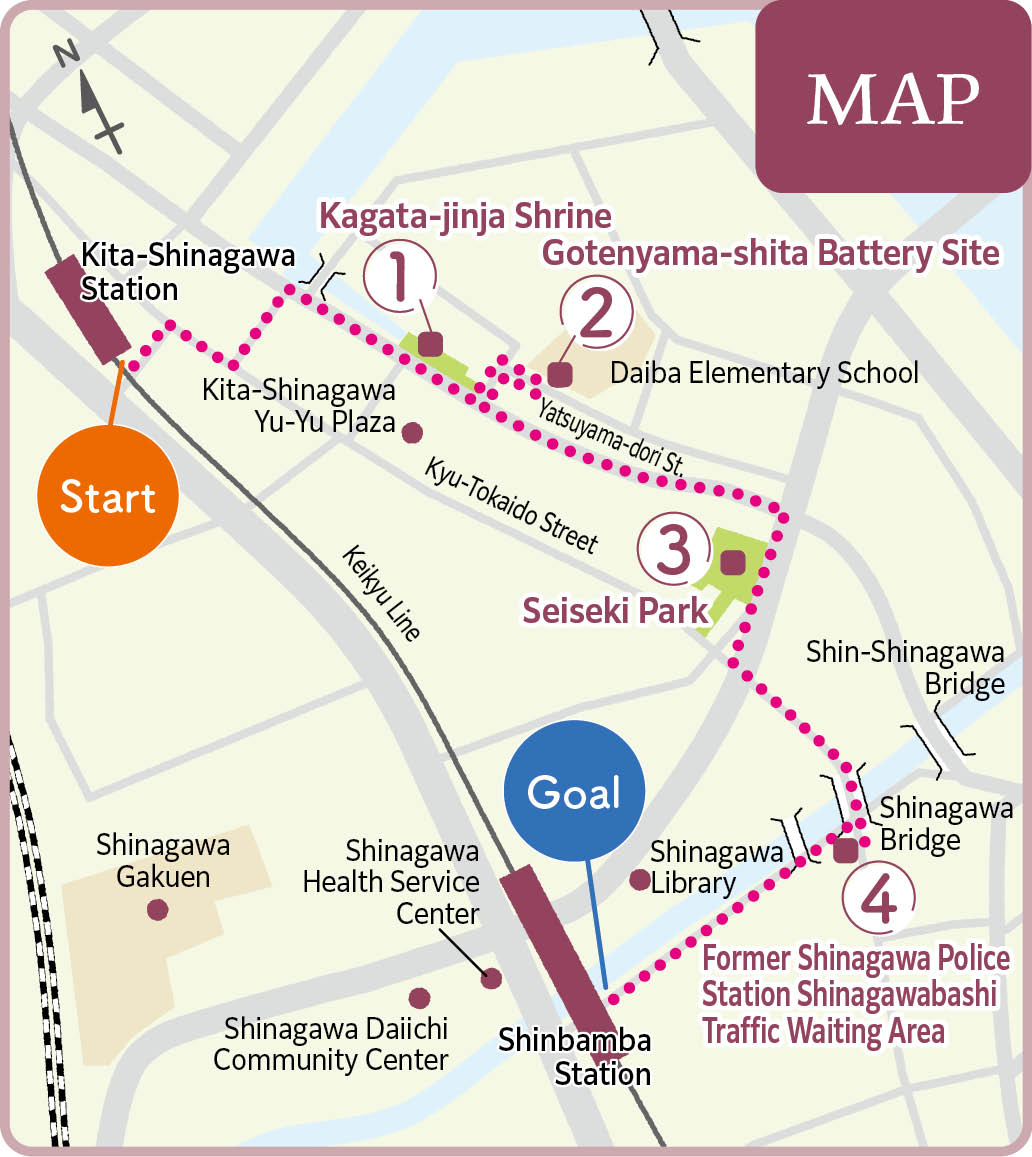
|
| |
Start Kita-Shinagawa Station |
About 7 minutes |
 |
0.5 km |
About 1 minute |
 |
0.1km |
❷ Gotenyama-shita Battery Site |
About 6 minutes |
 |
0.4km |
About 4 minutes |
 |
0.2km |
❹ Former Shinagawa Police Station Shinagawabashi Traffic Waiting Area |
About 7 minutes |
 |
0.5km |
|
Let’s check out some of Shinagawa Historical Museum’s cultural properties!
|
Shinagawa-shuku’s Stone Wall
This portion of the coastal levee constructed along the Tokaido was removed in November 2015 and donated to the Shinagawa Historical Museum. It is believed to have been built in around the late 1800s using tuff (hardened volcanic ash) from Mount Nokogiri in Chiba Prefecture. |
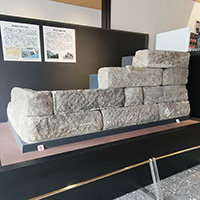 |
■Hours: 9:00 a.m. to 5:00 p.m. (the entrance closes at 4:30 p.m.)
■Closed: Mondays (or the next weekday if Monday is a national holiday) and during the yearend/New Year’s holidays.
Note: The museum may be closed on days other than those listed above.
■Admission: 100 yen
(50 yen for elementary and junior high school students)
Note: Admission is free for elementary and junior high school students residing in or enrolled in a school in Shinagawa, people over the age of seventy, and people with disabilities.
■Inquiries: Shinagawa Historical Museum
(Tel: 03-3777-4060, Fax: 03-3778-2615) |

Please scan here for the museum’s website. |
|
|











